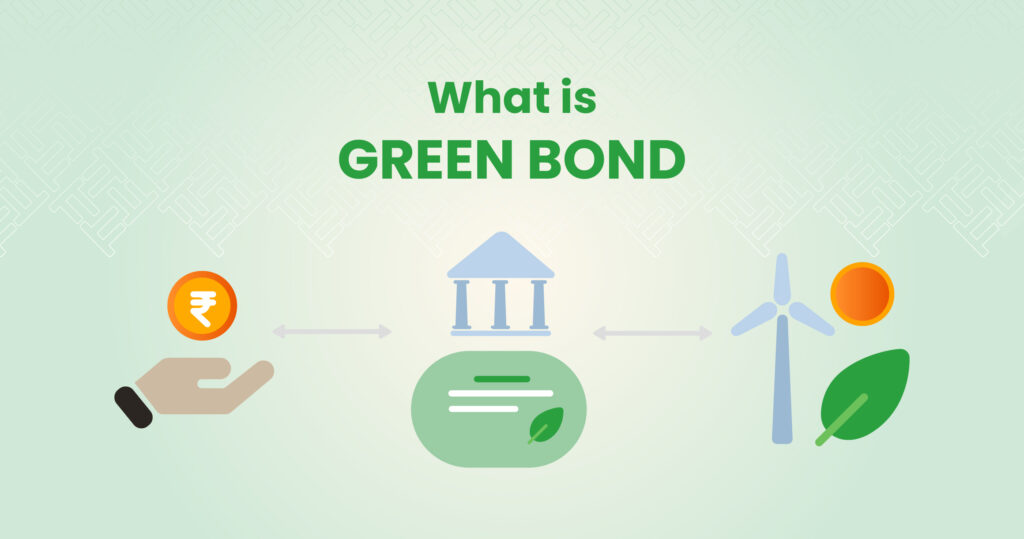
Green bonds are fixed-income investments that are used to finance environmentally or climate-friendly projects. Green bonds are similar to standard bonds in that they are loans made by investors to governments, companies, or financial institutions, with interest payments and principal repayments at maturity. Green bonds are unique in that they finance exclusively environmental projects. Examples include renewable energy, energy efficiency, pollution control, clean transportation, and resource conservation. Green bonds allow investors to invest in green projects while making a profit.
Practical Aspects of Green Bonds
Green bonds work in the same way as regular bonds. Green bonds raise funds for environmental projects. Investors receive interest (coupon interest) during the term. At the end of the term, the issuer repays the principal. Transparency and accountability in the use of funds set green bonds apart. Issuers are required to report on the use of funds and the environmental impact of the projects they finance. The quality and detail of such reporting can vary, but the aim is to ensure that the funds are effectively addressing environmental challenges.
Benefits of Investing in Green Bonds
One of the benefits of green bonds is that they support environmental sustainability while delivering consistent returns. Green bonds are a systemic mechanism that helps investors link their bond holdings to their investment principles. Green bonds issued by reputable institutions such as governments or large development banks are generally low risk. Conservative investors and sustainable finance enthusiasts may prefer green bonds. Due to their popularity, green bonds are now part of many ESG (environmental, social, and governance) investment strategies, making them essential for sustainable investing.
Risks and Considerations for Investing
Green bonds have many benefits, but investors should be aware of the risks and limitations. One concern is the phenomenon of ‘greenwashing,’ where funds are advertised as green bonds but are not environmentally friendly in reality. The lack of a universal standard for green bonds makes some projects difficult to verify. Green bonds also offer returns that are similar to or slightly lower than traditional bonds, which can be unattractive to high-yield investors. Some green bonds, particularly those issued by smaller institutions, can be more difficult to buy and sell. Due diligence and an understanding of the issuer’s reputation and reporting standards are essential when investing in green bonds.
Third-party Verification of Green Bonds
Many issuers seek third-party certification or approval to ensure that green bonds meet environmental goals. The Climate Bonds Initiative and other independent bodies ensure that bonds meet global green finance requirements. Third-party assessments increase openness and investor confidence. Some bonds follow the International Capital Market Association (ICMA) Green Bond Principles, which are designed to promote transparency and disclosure. These certifications are not mandatory, but they help prevent greenwashing and increase the credibility of the green bond market.
Projects Financed by Green Bonds
Green bonds finance large infrastructure and local environmental projects. Examples include solar and wind energy installations, energy-efficient buildings, electric public transportation, and clean water management programs. Green bonds can help less developed countries develop sustainable agriculture and reforestation. These efforts directly address climate change, resource depletion, and pollution. By investing in green bonds, individuals and organizations support these important projects and a low-carbon, sustainable global economy. This unique combination of purpose and return is why green bonds are so popular.
Who Should Consider Investing in Green Bonds
Green bonds are suitable for many investors, particularly those who value environmental or ESG principles. Conservative investors looking for sustainable fixed-income investments with low risk are often advised to opt for green bonds. Green bonds are often part of the long-term strategy of pension funds, foundations, and socially responsible investment funds. Private investors can contribute to environmental change through green bonds without changing their investment strategy. Green bonds can enhance a diversified portfolio, particularly for long-term investors with a moderate risk appetite.
Green Bonds and the Future of Sustainable Finance
Green bonds are likely to develop rapidly as demand for climate-friendly investments increases. Governments worldwide are setting ambitious climate goals, and the financial sector is starting to take sustainability seriously. As regulations become stricter and awareness grows, green bonds are likely to become increasingly important in the global financial sector. Emerging developments such as blue bonds (focused on marine protection) and sustainability-related bonds offer more opportunities for investors to contribute. The growing green bond market shows that the financial sector is adapting to the concerns of 21st-century people and providing opportunities for investors to contribute.
Conclusion
Green bonds help balance financial goals with environmental objectives. These instruments allow individuals and institutions to invest in climate change, renewable energy, and natural resource conservation while earning predictable returns. Green bonds are becoming more accessible and reliable as the market grows, thanks to external verification and clearer requirements. There are risks associated with greenwashing and lower returns, but the long-term benefits for the planet and investors can be enormous. Both new and experienced investors should consider green bonds as part of a sustainable and forward-looking investment plan.
FAQs
1. What are green bonds used for?
Green bonds provide financing for projects in renewable energy, energy efficiency, pollution reduction, and sustainable agriculture.
2. Green bonds: a safe investment?
Green bonds issued by reputable institutions are low risk. They carry the same risk as any other investment and should be considered carefully.
3. Do regular bonds or green bonds pay interest?
Like regular bonds, green bonds pay coupons, and the principal is repaid at maturity.
4. Can individuals buy green bonds?
Many green bonds are available to individual investors through mutual funds, ETFs, or investment accounts, depending on the issuer.
5. How can we verify a green bond?
Check for third-party certification or compliance with the Green Bond Principles. To verify the purpose and reliability of a bond, you can read the issuer’s environmental report.
